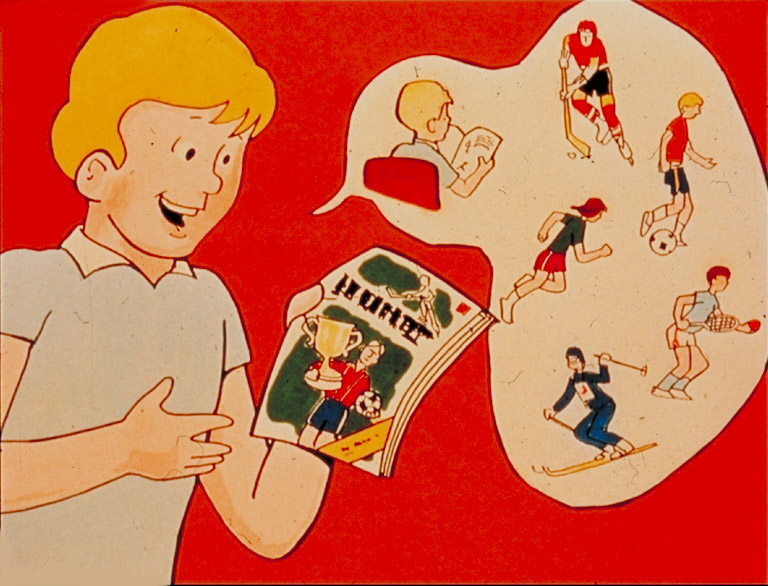 |
||||||||||||||||||||||||||||||||||||||||||||||||||||||||||||||||||||||||||||||||||||||||||||||||||||||||||||||||||||||||||||||||||||||||||||||||||||||||||||||||||||||||||||||||||||||||||||||||||||||||||||||||||||||||||||||||||||||||||||||||||||||||||||||||||||||||||||||||||
| Lesson 2 continues to expand on the gender and case of nouns as follows:
Dialogue 2 introduced two masculine hard-ending inanimate nouns:
An inanimate noun is one which refers to a non-living being or object. Masculine inanimate nouns for
*The English word football is the Ukrainian term for soccer . This can lead to some confusion when talking to someone from Ukraine. You may be speaking about the North American sport (with a pointed pigskin ball), while the person from Ukraine will automatically be referring to the popular European sport. You must clarify whether you are referring to American football or European ‘football' (soccer). Other inanimate masculine nouns which refer to reading are given below.
Знахідний відмінок - Accusative Case The Accusative case is used to denote the direct object of the action expressed by the verb or verb phrase.
You will notice that the noun ending does not change; it looks the same as the original form of the word in the Nominative case. This may be a bit confusing at first, but you must check the function of the word in the sentence. Is it the subject of the sentence? If the answer is yes, then it is the Nominative case. Is it the object of the action indicated by the verb? If so, then it is the Accusative case. Check the examples below to compare the use of the same words in the Nominative case. In each example, the noun is the subject of the sentence, not the object.
The rule is simple: Masculine inanimate nouns in the Accusative Case do not change their form. II. Exercise 2.i Using the example given, complete the following exercises with the appropriate answer.
II. Exercise 2.ii Place the masculine and feminine nouns in the correct column.
II. Exercise 2.iii Place the proper nouns in the appropriate column.
II. Exercise 2.iv Complete the exercise using the Accusative case of the noun pictured in the right hand column.
Cultural Enrichment: Continue to practise your Ukrainian handwriting skills by referring to the exercises which have been placed in the Cultural Enrichment section for Unit II.
|
||||||||||||||||||||||||||||||||||||||||||||||||||||||||||||||||||||||||||||||||||||||||||||||||||||||||||||||||||||||||||||||||||||||||||||||||||||||||||||||||||||||||||||||||||||||||||||||||||||||||||||||||||||||||||||||||||||||||||||||||||||||||||||||||||||||||||||||||||
|
||||||||||||||||||||||||||||||||||||||||||||||||||||||||||||||||||||||||||||||||||||||||||||||||||||||||||||||||||||||||||||||||||||||||||||||||||||||||||||||||||||||||||||||||||||||||||||||||||||||||||||||||||||||||||||||||||||||||||||||||||||||||||||||||||||||||||||||||||
























